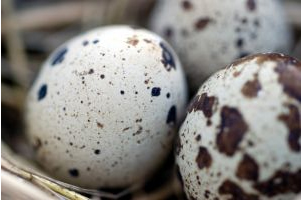Start raising quail by hatching quail eggs in an incubator and brooding the baby quail. Hatching and brooding your own quail can be a fun and exciting experience. You can hatch and brood any type of quail, though one of the most common course of action is hatching and brooding Bobwhite quail.
Things You’ll Need to Brood Quail:
Fertile quail eggs (obtained from a local quail breeder); an incubator; and a brooder lamp for brooding the young quail.
Set the incubator humidity and incubator temperature to prepare the egg incubator for hatching quail eggs. Follow the instruction manual that came with the egg incubator to learn how to modify its humidity and temperature settings.
The best humidity for hatching quail eggs is 70% humidity while you are incubating the quail eggs. After the quail eggs hatch, adjust the humidity to 80%. The temperature of the incubator should be at approximately 100 degrees fahrenheit.
Set the fertile quail eggs into the egg incubator with the small end of the quail egg pointing in a downward direction. Some incubators have automated egg turning mechanisms. If you are not using a mechanical egg turner, turn the eggs by hand at 30-degree intervals.
Turning quail eggs while incubating them is important because it helps to keep the quail egg embryos from sticking and growing to the side of the fertile quail egg.
How Long Does It Take to Hatch Quail Eggs?
The length of time to hatch fertile quail eggs depends largely upon the type of quail that you are hatching. For example, fertile Bobwhite quail eggs take 24 days to hatch.
Brooding Baby Quail:
Baby quail need to be placed into a brooder to keep them warm after they hatch. In nature, the mother quail would keep the baby quail warm. If you’ve used an incubator, you must use an artifical method of heating. A standard heat lamp (100-watt) used for brooding chicks (baby chickens) is sufficient for brooding quail. Keep the temperature at 100 degrees fahrenheit and decrease the brooding temperature by five degrees every seven days.



